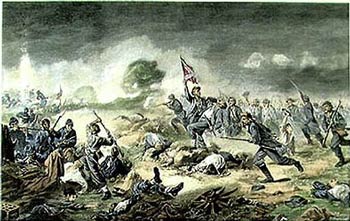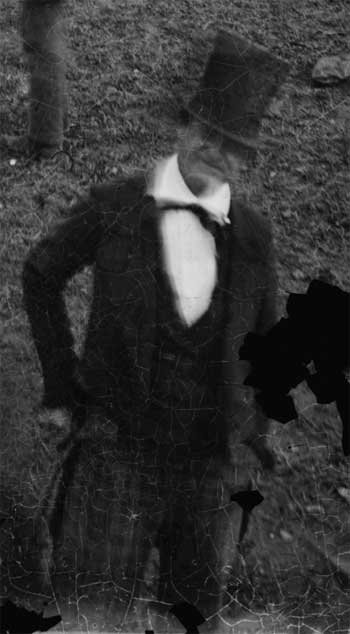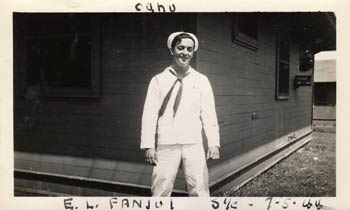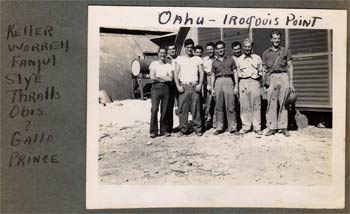Farewell Mimi
3 June 2008
Cuban born American chief-of-the-great-clan Emilio Louis Fanjul (1924-2008) returned to the boundless deep yesterday afternoon at 3:15pm. Fine son, husband of endless love, father of many daughters, he made the good exit in the heart of his family at Haddonfield, New Jersey after the long dance with Alzheimer’s.
In yellowed photographs he smiles forever.
He lived in joy and honor, and will forever in us.
And to the last generation.
_____________
Philadelphia Inquirer obituary (6/4/08)
12th Virginia Infantry in Maryland
20 February 2008
The sad story of the officers and men of the 12th Virginia Infantry Regiment of late 1862 is typical for a number of the tattered units of the Confederate Army of Northern Virginia (ANV) who were at Sharpsburg that September.

The Crater (c. 1866, J. Elder)
The Fourth Battalion as it left Petersburg on the 20th of April, 1861, was made up of the flower of the manhood of the Cockade City. After four years of service it had been so decimated by disease, by death, by promotion, and by transfer that it showed scarcely more than a skeleton of the original body. It was the nucleus upon which was formed the famous Twelfth Virginia Regiment, whose banner bore the device of almost every field on which the Army of Northern Virginia grappled with the enemy, from Seven Pines to Appomattox, and whose flag, stained with the smoke of battle and shredded by ball and shell, was never surrendered, but torn into slips and buried in the bosoms, right over the hearts, of the veteran survivors.
Snapshots
15 January 2008

While chasing one of my boys, Lieutenant Colonel Samuel W. Owen, 3rd Pennsylvania Cavalry, I came on a photograph of him in an unusual setting. It made me think about how few casual or frivolous pictures–snapshots–I’ve can remember seeing among (probably) thousands of American Civil War-era images.
On reflection, this isn’t surprising. Due to the technical demands of wet-plate photography during the War, I’d expect most photographs to have a serious purpose. The long exposures and difficulty in preparing and developing photographs in the field probably made it less likely that photographers would risk wasting film on a moving subject or mundane scene.
Perhaps as a result, most surviving photographs are stiffly posed, and live subjects seem terribly aware of the camera. For fun, today, I’ve found a few with quite a different feel …



